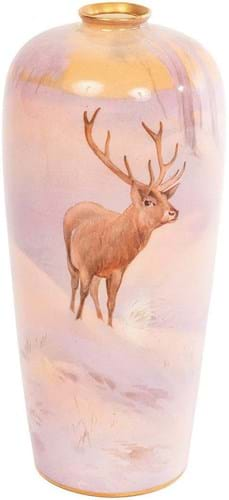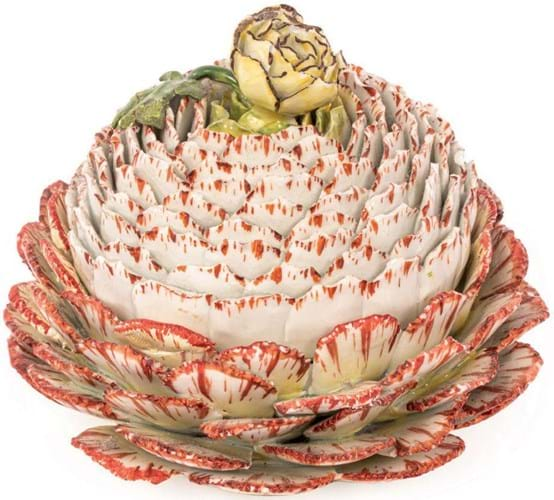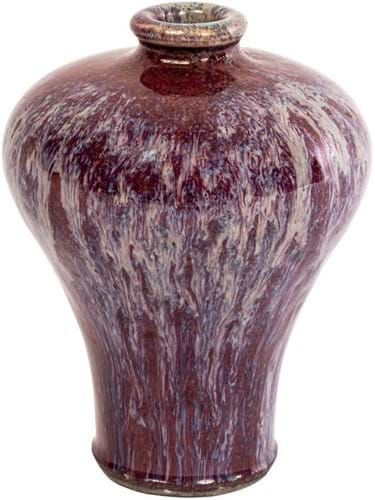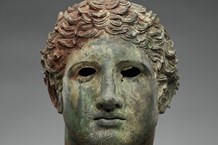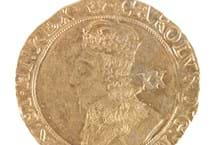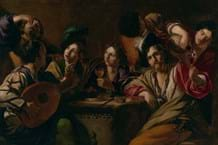If the name of Sandon is synonymous with Worcester, it perhaps came as no surprise that it was a 1921 Royal Worcester vase that achieved the highest price at Chorley’s (22.5% buyer’s premium) on April 18.
Decorated with a red deer stag in the snow in 1921 by Harry Davis (1885-1970), a painter Sandon befriended in his later years, it sold for £3000 to a private buyer in the room for the Henry Sandon Study Collection sale, against an estimate of £800-1200.
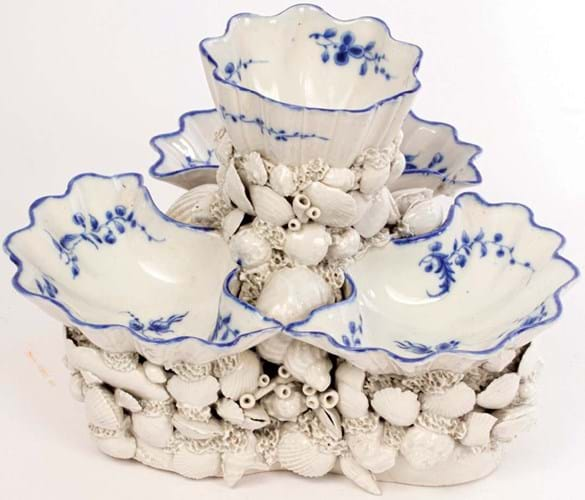
Worcester or Caughley triple salt or sweetmeat stand, £1600 at Chorley's auction of the Henry Sandon collection.
The private collection of the much-loved BBC Antiques Roadshow expert, author, lecturer and Worcester aficionado proved a great draw to the Gloucestershire saleroom.
In these days of remote bidding, the 1000-plus pieces offered in 279 lots attracted a packed saleroom including a generous helping of members of the Ceramics Circle.
The sale exceeded the auction house’s modest expectations, fetching over double its pre-sale estimate with only 23 of the 279 lots left unsold.
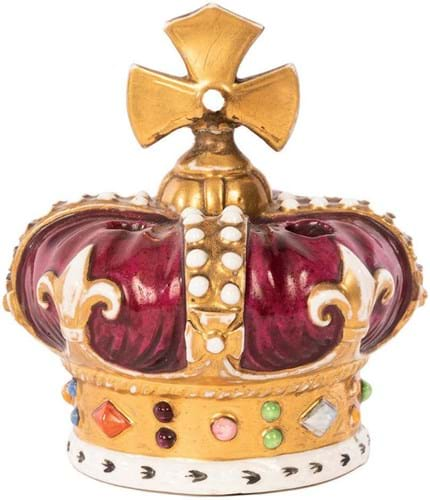
Derby inkwell in the form of a crown or coronet, c.1820, £420 at Chorley's auction of the Henry Sandon collection.
Seen as a whole
Sandon, now 94, was keen that buyers might peruse his collection as a whole.
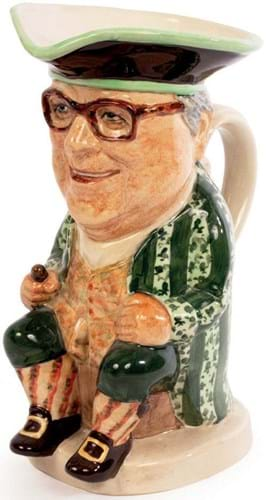
Henry Sandon toby Jug by Kevin Francis (plus four other items), £550 at Chorley's auction of the Henry Sandon collection.
“Now that I’m older than most of the ceramics in my collection I am no longer able to pick up and hold and cherish every one of the hundreds of pieces I have lived with”, he quipped.

Holics faience 12-tile panel, Hungary, third quarter 18th century, £850 at Chorley's auction of the Henry Sandon collection.
Sandon began his career as an enthusiastic archaeologist. Digging up Roman and medieval pots in his garden next to Worcester Cathedral led him to local auctions and “antiques shops filled with Worcester porcelain”.
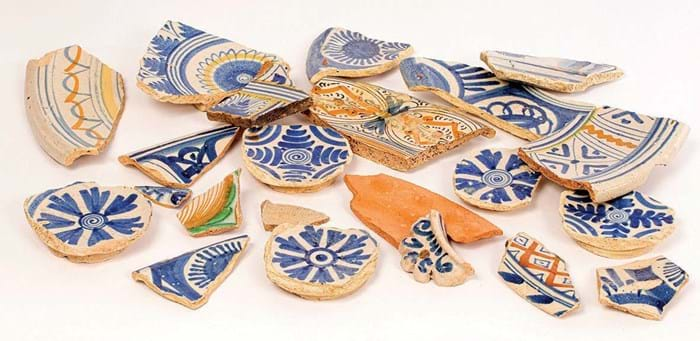
Quantity of 17th century delftware shards, £600 at Chorley's auction of the Henry Sandon collection.
The first 30 lots reflected that interest in archaeology and antiquity.
A large quantity of 17th century delftware shards and various fragments including Roman pottery and glass was the favourite lot of auctioneer Simon Chorley, “with every piece telling a story”.
Many of the delftware shards came from the pottery at Southwark’s Pickleherring Quay – swapped with friends and fellow collectors – and the remaining fragments excavated by Sandon himself. The market likes a story, and the lot sold for £600 against an estimated £100-150.
Study collections are amassed more for the pursuit of knowledge, as opposed to investment or show.
It was under the guidance of Jim Kiddell from Sotheby’s, Dr Bernard Watney and Geoffrey Godden that Sandon began to create his own private study collection.
“It didn’t matter that I could only afford damaged examples of the early pottery I coveted.
“I knew it was important to buy as much as I could and to hold and live with it.”
Viewed against Chorley’s occasionally ‘come-and-get-it’ estimates, there were a few surprises.
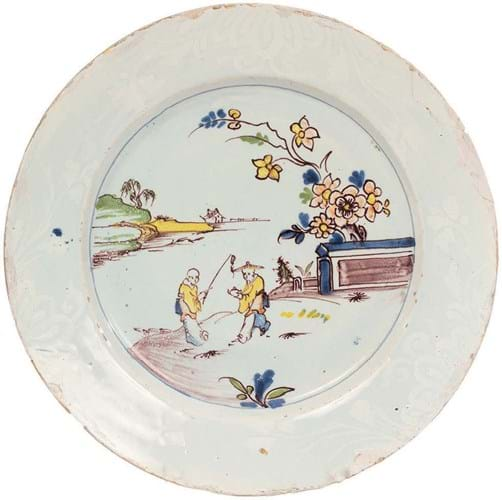
English polychrome delft plate, probably Bristol, c.1750-60, £750 at Chorley's auction of the Henry Sandon collection.
An attractive English delft plate (probably Bristol c.1750-60), decorated in yellow, manganese and blue with a Chinese figure offering a teapot to a friend was one of Sandon’s favourite pieces. The room shared his view on its charm, and the plate sold for £750 against an estimate of £100-150.
Unpredictable market
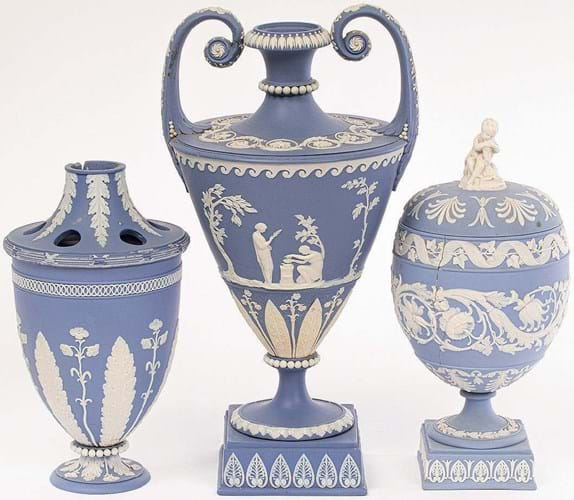
Three late 18th century jasperware vases, £1200 at Chorley's auction of the Henry Sandon collection.
The market for jasperware can be unpredictable, but three late 18th century vases (one by Wedgwood, two by Adams, took £1200 despite cracks, chipping, glued repairs and a missing cover to one vase.
In a similar vein, a Qing porcelain meiping with a sang-de-boeuf glaze streaked with turquoise and red sold to an internet buyer for £1700.
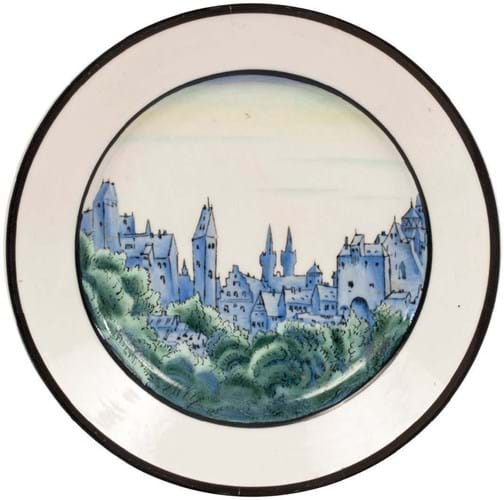
Soviet porcelain plate dated 1922 by the Imperial Porcelain Factory, £1100 at Chorley's auction of the Henry Sandon collection.
And hair cracks, chips and a troubled Russian art market notwithstanding, a Soviet revolutionary plate decorated with a townscape by Alexandra Balt sold to a British buyer for £1100. All had estimates of £100-200.
In 1966, Sandon was appointed curator of the Dyson Perrins Museum at the Royal Worcester Factory, a position he held until 1982.
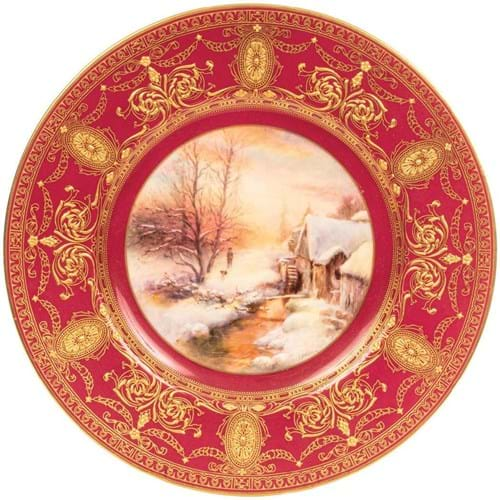
Royal Worcester plate from the Kellogg Service, £2200 at Chorley's auction of the Henry Sandon collection.
A Royal Worcester plate by Harry Stinton (1883-1968) from a service commissioned for William Keith Kellogg – of breakfast cereal fame – featured a costly red field deliberately chosen to match the famous Kellogg logo.
Kellogg ordered two sets of 25, painted by one of Worcester’s best artists.
The plate, painted with a rural winter landscape, was a spare given to Sandon in reward for advice given when the service was sold in 1985. It achieved £2200 against an estimate of £1000-1400.
Among the earlier pieces, a private collector secured the Worcester or Caughley triple salt or sweetmeat stand, c.1780, for £1600 (Estimate: £250-350). It has a hairline crack and scattered chipping.
Reference works
The 31 lots of studio pottery proved softer with 12 lots failing to sell, although a stoneware vase by Geoffrey Whiting made £500.
Still, a collection of studio pottery reference books fetched a generous £220 (estimate £50-100) as part of Sandon’s library sold as the auction came to a close.
A collection of antiquarian books on the city of Worcester and its porcelain sold for £600 – an invaluable reference source for future generations.
As Sandon says: “It’s time for all of my pots to join new study collections.”

